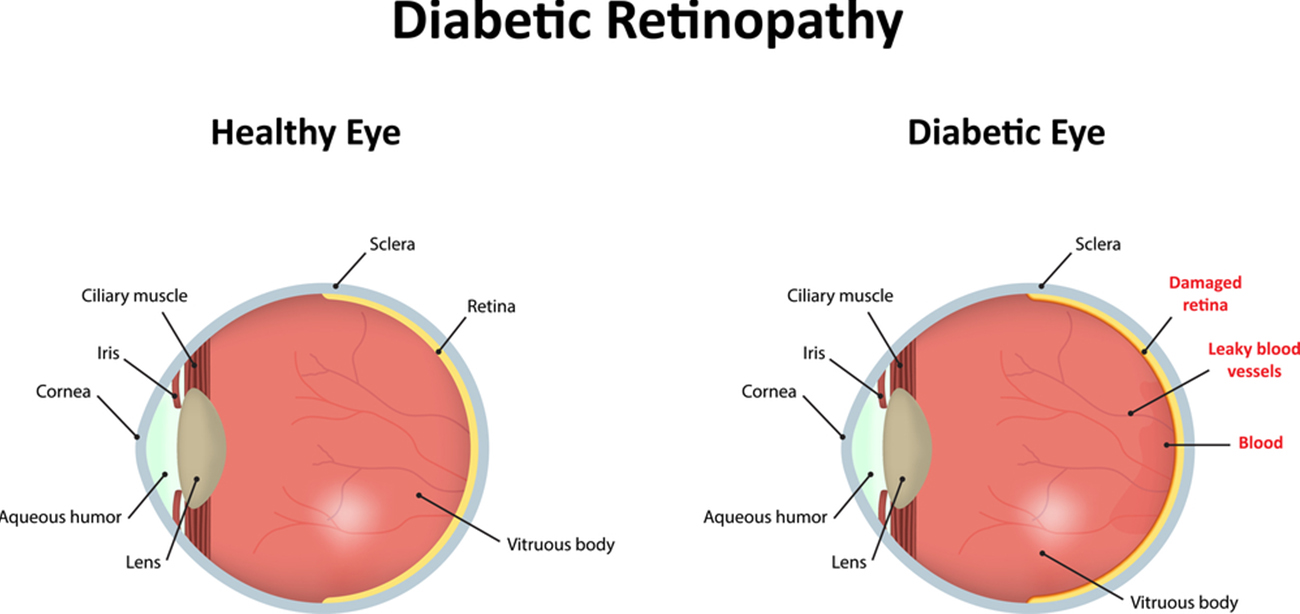Understanding Diabetic Retinopathy: A Guide for Patients
What is Diabetic Retinopathy?
Diabetic retinopathy is a diabetes complication that affects the eyes. It is caused by damage to the blood vessels of the light-sensitive tissue at the back of the eye (retina). If left untreated, it can lead to blindness. This condition can develop in anyone who has type 1 or type 2 diabetes, especially if their blood sugar levels are not well controlled over time.

Symptoms of Diabetic Retinopathy
Common symptoms of diabetic retinopathy include:
- Spots or dark strings floating in your vision (floaters).
- Blurred vision.
- Fluctuating vision.
- Impaired color vision.
- Dark or empty areas in your vision.
- Vision loss.
Causes and Risk Factors
Diabetic retinopathy is caused by prolonged high blood sugar levels that damage the blood vessels in the retina. Factors that increase the risk of developing diabetic retinopathy include:
- Duration of diabetes: The longer you have diabetes, the higher your risk.
- Poor control of blood sugar levels.
- High blood pressure.
- High cholesterol.
- Pregnancy.
- Tobacco use.
- Being of African American, Hispanic, or Native American descent.
Types of Diabetic Retinopathy
There are two main types of diabetic retinopathy:
- Non-Proliferative Diabetic Retinopathy (NPDR): This is the early stage where blood vessels in the retina weaken and leak fluid or blood. As the condition progresses, more blood vessels become blocked.
- Proliferative Diabetic Retinopathy (PDR): This is the advanced stage where the retina starts growing new, abnormal blood vessels. These new vessels can leak into the vitreous (the gel-like substance that fills the eye) and cause vision problems. Scar tissue can also develop, leading to retinal detachment.
Diagnosis
Diabetic retinopathy is diagnosed through a comprehensive eye exam, which includes:
- Visual acuity test: Measures how well you see at various distances.
- Dilated eye exam: Drops are placed in your eyes to widen the pupils so the doctor can examine the retina and optic nerve.
- Optical coherence tomography (OCT): Imaging test that provides cross-sectional images of the retina to detect fluid or abnormal blood vessels.
- Fluorescein angiography: A dye is injected into your arm, and photographs are taken as the dye circulates through the blood vessels in your retina to identify any blockages or leaks.
Treatment
The treatment of diabetic retinopathy depends on the type and severity of the condition:
- Control of blood sugar, blood pressure, and cholesterol: These are critical steps to prevent or slow the progression of diabetic retinopathy.
- Anti-VEGF injections: Medications that reduce the growth of abnormal blood vessels.
- Laser surgery: Laser photocoagulation to stop or slow the leakage of blood and fluid in the eye.
- Vitrectomy: Surgery to remove the vitreous gel and the blood from leaking vessels in the back of the eye.
Early detection and treatment can significantly reduce the risk of vision loss. Regular eye exams are essential for anyone with diabetes.
Prevention
While diabetic retinopathy cannot always be prevented, certain measures can help reduce the risk:
- Regular eye examinations: Detect problems early and keep your vision clear.
- Managing diabetes: Keep your blood sugar, blood pressure, and cholesterol levels under control.
- Maintaining a healthy diet and regular exercise: Support overall health and manage diabetes.
- Avoiding smoking: Reduces the risk of developing diabetic retinopathy.
- Regular monitoring: Keep track of any changes in your vision and consult your eye doctor promptly.
